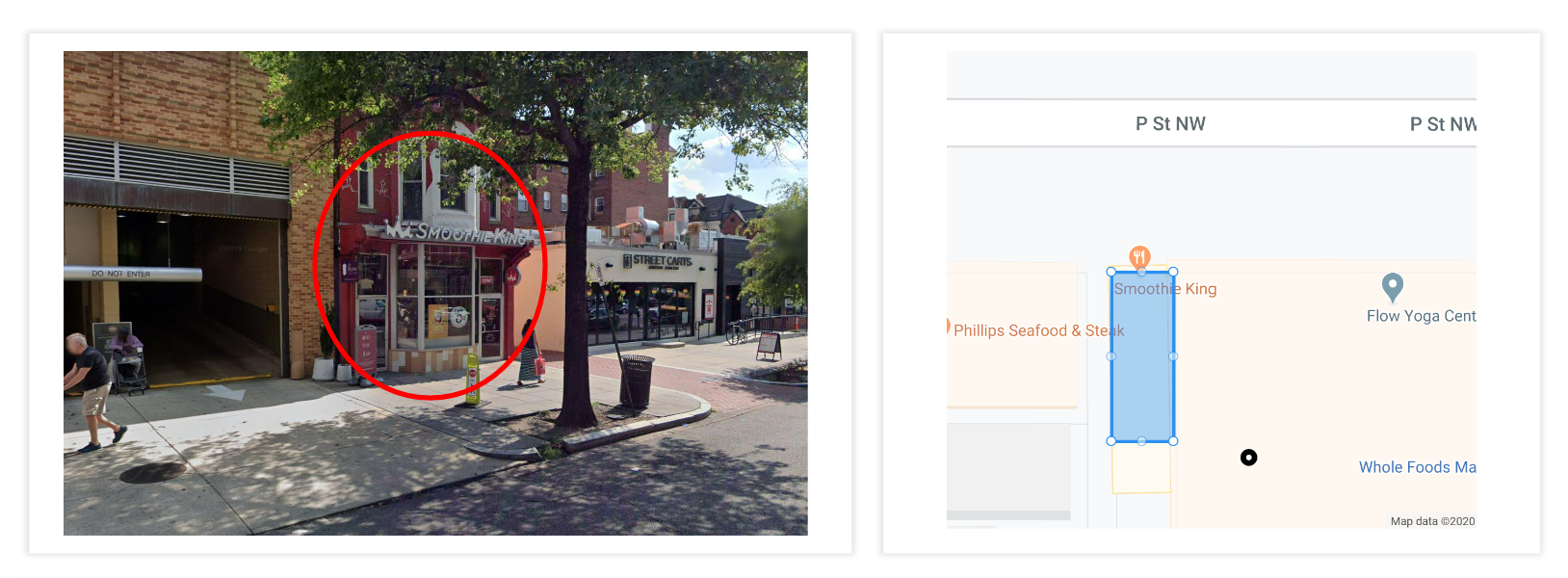Retail is not dead. But it is evolving. How do you remind local customers that your brick-and-mortar exists in a strategic and cost-effective way?
In this guide, we'll explore the benefits of geofencing marketing for retail marketers, how it works, and best practices for using it to drive more customers to your retail stores.
But first, why invest this extra time in learning about geofencing?
Geofencing marketing is still a rather unsaturated advertising channel because it’s a little more conceptual than other modes of advertising. However, invest the time in learning more about this emerging technology and it’ll give you an edge over your competition.
After reading this guide, you’ll understand how geofencing lets you tap into your hyperlocal community using your customers’ location-based history (and yes, it’s totally legal!).
Why does geofencing work?
Geofencing works for one simple reason: your customers have a location-enabled smartphone.
According to the Pew Research Center, as of January 2023, 97% of Americans have a cellphone of some kind. This includes 92% of adults who own a smartphone.
Think about this, when was the last time you willingly stepped outside of your home without your cell phone? Never! (At least not on purpose.)
Similarly, your customers are dependent on their mobile phones and more often than not, have their location services enabled.
But first, what is a geofence?
A geofence is a virtual fence drawn around any real-world location or point of interest.
Digital advertisers use these fences to collect the anonymous mobile IDs (MAIDs) of walk-in traffic. Every mobile phone has its own MAID. With MAIDs in hand, you can now target the audience generated from the captured walk-in traffic data with your own digital advertising ads.
🔑 Geofences are your key to unlocking hyperlocal retail advertising.
You can think of a geofence akin to a virtual bubble. Imagine stepping outside your store and placing 'bubbles' around the neighboring businesses to capture their customers. These 'bubbles' will actively collect their data and enable you to reach them with your own digital ads from your retail store.
Essentially, you can poach walk-in traffic from your competitor.

Retail geofencing ads (in the form of video or digital display ads) can reach your audiences in a few channels including:
- Streaming TV platforms like Hulu, Sling TV, and Peacock TV
- Mobile apps & browsers
- Social media properties like Facebook & Instagram
Don't forget! Geofencing is also a great way to retarget customers who have previously stepped into your retail location.
Benefits of geofencing for retail marketers
Geofencing marketing offers numerous benefits for retail marketers. Here are some of the most notable advantages:
1) Increased Foot Traffic: Geofencing marketing allows retailers to target users in close proximity to their stores, increasing the likelihood that they'll visit and make a purchase at their establishment.
2) Simplifies Retargeting: Coax loyalty without setting up a loyalty program. Geofencing makes it easy to retarget customers who have already walked into your retail store and who have visited your website.
3) Measurable ROI: At RetailGeofencing.com, we provide our clients with transparent reporting and a custom dashboard link to help facilitate tracking their ROI. Track walk-in traffic as well as website visits to gauge the efficacy of your campaign.
What makes RetailGeofencing.com different
Geofencing marketing at RetailGeofencing.com involves three key components: strategic geofences, omnichannel exposure, and continued optimization.
✔️ Informed Geofences: We've partnered with Placer.ai to utilize historical mobile data and provide customer insights to help inform you which locations (or points of interest) are most likely to convert from targeted advertisement. Discover where your customers live, work, and play!
Local retail geofence locations can include:
- Shopping malls
- Restaurants
- Gyms
- College campuses
- Churches
- Casinos
- Metro stations
You can even geofence local events such as:
- High school and college football games
- Farmers markets
- Concerts
- Tradeshows
✔️ Omnichannel exposure: Reach your customers across all their devices including desktops, mobile apps and browsers, as well as streaming TV.
✔️ Continued optimization: We don’t just set it and forget it. We review your campaigns on a recurring basis and provide actionable insights to help optimize your campaign to improve the ROI of your campaign.
We leverage AI to facilitate ad creation
Our studies have shown that after 30 days, creative fatigue sets in and begins to take a toll on ad engagement. But keeping your creative updated frequently takes bandwidth that your team probably doesn't have.
Enter: AI-generated videos. Our clients are deploying new videos on a monthly basis in less time than ever—and, the results are stunning.
We make it easy to generate fresh assets showcasing your offers and discounts, as well as generating new videos for your campaign to keep your customers engaged. With AI-generated videos, producing new videos for your retail store has never been easier. Ready to speak to one of our experts? Book a demo today!
Best Practices for Geofencing Marketing for Retail Marketers
To make the most of geofencing marketing, retail marketers should follow these best practices:
1) Define Your Target Audience: Identify the customers you want to target and create geofences around locations where they are likely to be, such as nearby competitors or popular attractions.
2) Create Compelling Messaging: Craft messaging that is personalized, engaging, and relevant to the user's location and behavior, highlighting the unique features and offerings of the store.
3) Set Clear Objectives: Define your goals for geofencing marketing, such as driving foot traffic, increasing sales, or building brand awareness.
4) Monitor and Optimize: Monitor your geofencing campaigns regularly and make adjustments based on performance data to improve ROI and drive better results.
Geofencing marketing is a powerful tool that can help retail marketers increase foot traffic, drive sales, and build brand awareness. By following best practices and creating compelling messaging, retail marketers can effectively leverage geofencing marketing to engage with potential customers in real time and deliver personalized, relevant messaging that drives sales and builds brand loyalty.



 RetailGeofencing.com is owned and operated by the team at Intrinsic Digital. We are a retail digital marketing agency equipping our clients with the most advanced location-based mobile advertising on the market. This emerging technology is continually evolving, and we are dedicated to refining and providing our leading edge expertise to help our clients unlock hyper-local geofencing.
RetailGeofencing.com is owned and operated by the team at Intrinsic Digital. We are a retail digital marketing agency equipping our clients with the most advanced location-based mobile advertising on the market. This emerging technology is continually evolving, and we are dedicated to refining and providing our leading edge expertise to help our clients unlock hyper-local geofencing.